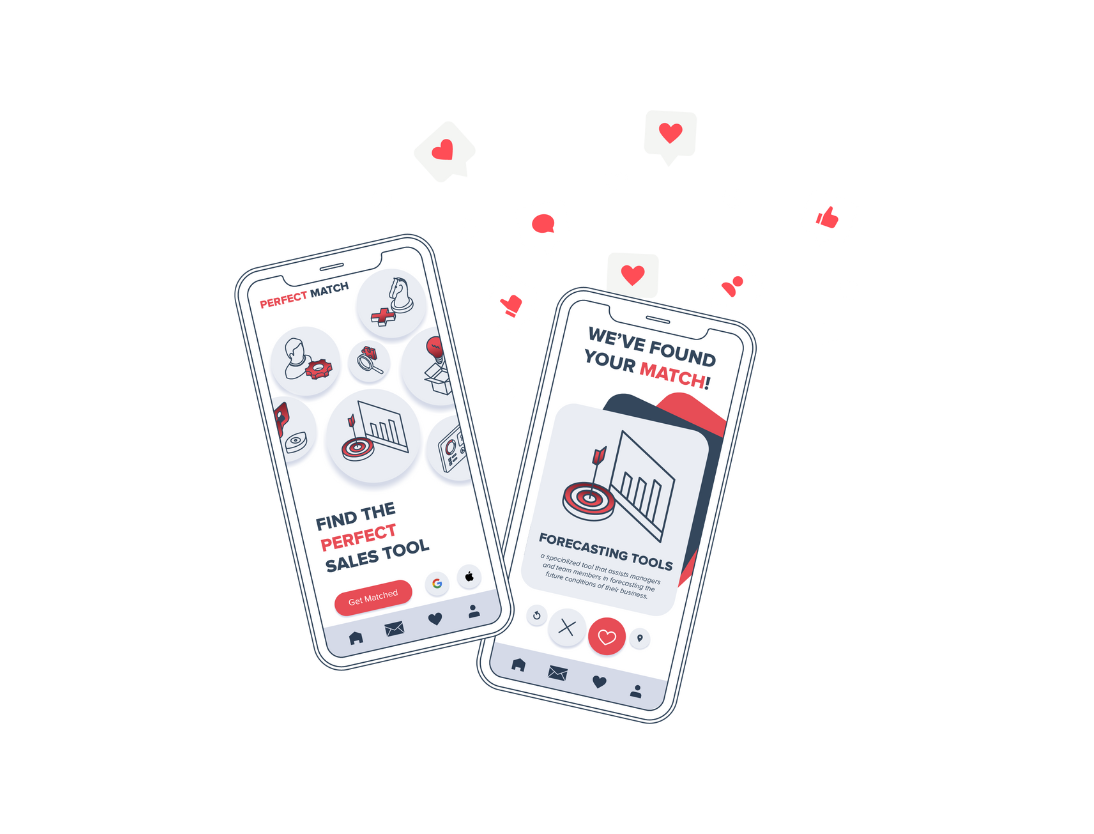
In this blog post, Shane Punt, Marketing Strategist at Huble Digital, shares his thoughts on COVID-19 and how B2B sales has changed.
For many friends who work in the B2B sales space, COVID-19 has created a very different and much tougher work environment. Companies have cut budgets and are hesitant to commit to new “big” investments that are typical of the B2B space. This has effectively created a new paradigm in B2B sales.
According to a study by Business2Community.com, 73.9% of B2B sales opportunities had decreased during COVID 19.
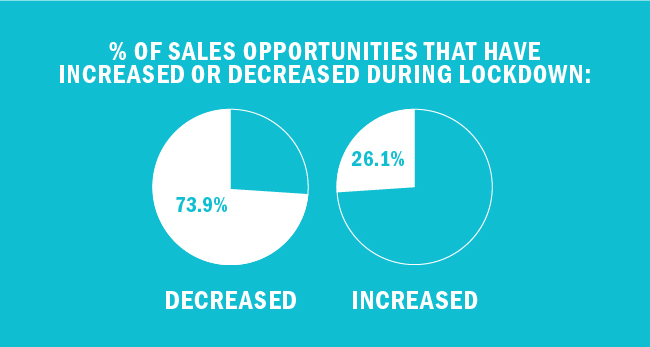
Source: Contemsa.com
The past couple of months haven’t been great for those in sales, but there is a silver lining to the current environment in terms of accelerating businesses' digital transformation timelines.
With the old way of doing things simply not possible, forward-thinking and fast-acting companies have embarked on a digital transformation exercise that would have been hard to imagine them committing to at all last year, let alone at the pace that they have done so far.
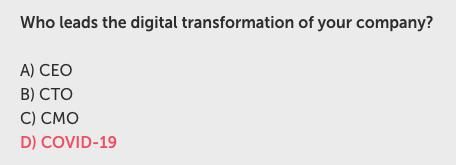
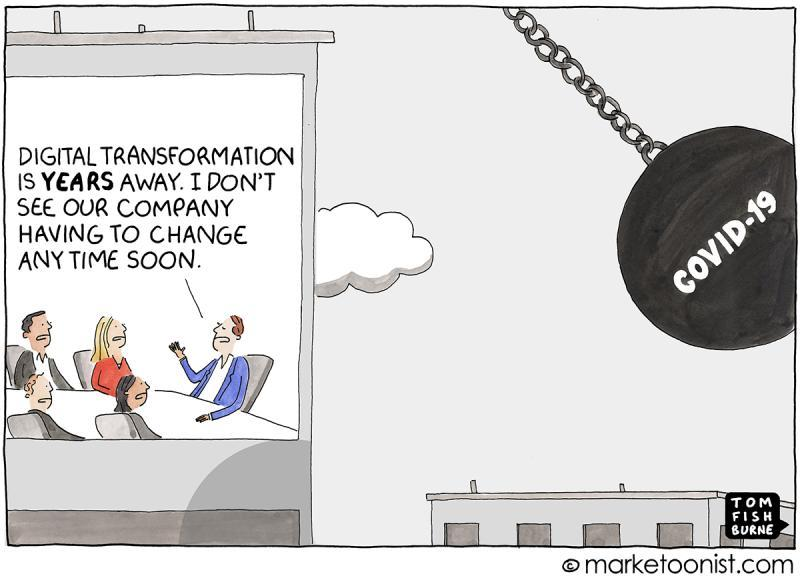
I firmly believe that companies that have accelerated their digital transformation will be better placed to weather the storm — and possibly even grow faster in 2021 — than they would have been otherwise.
So What Are B2B Companies Doing?
Every B2B industry and company has had to deal with COVID-19 in some way, with the vast majority being adversely affected (unless you’re Zoom). This has forced B2B sales processes to adapt and change.
COVID-19 appears to have been the ultimate proving ground of what aspects of digital transformation will have a positive impact on B2B sales during the pandemic and beyond.
Based on first-hand experience, I’ve highlighted some of the digital transformation efforts that appear to be having a positive impact on businesses.
E-commerce For B2B
Although ecommerce has been around for what feels like forever, it has typically been the realm of B2C. What B2B companies have started to realise is that not every sale needs to involve a salesperson driving every step.
A relevant example is a business I’m currently working with in the B2B medical space. They have been looking to drive more ongoing purchases without having to invest in a bigger sales team (this was even before during COVID-19).
Going forward, the business is designing a new sales process that enables customers to self-serve and purchase products online without needing to send an email or get a hold of a sales rep.
Sales, on the other hand, is shifting from driving day-to-day sales to becoming enablers of sales, with a stronger focus on building existing relationships and providing assistance, information and help to new customers.
To enable this, the company is integrating Shopify’s ecommerce capabilities with HubSpot’s CRM and CMS. This is going to provide them with a customer self-service capability, backed up with a single customer view. They will also be able to provide personalised messaging and create a smoother sales process for new B2B business opportunities.
I fully expect that this will yield more sales and provide a better end-customer experience.
Online As The Front Line For Sales Teams
As I mentioned previously, COVID-19 has forced sales teams to digitally transform at a rapid pace. But what has this looked like and what has changed?
A study from McKinsey states, “Sales leaders on average rate digital channels approximately twice as important now as they were before, with B2B decision-makers in Spain and the UK rating them even more highly (close to triple their previous importance)”.
Prior to COVID-19, there were literally thousands of “field sales” people who would usually be at event stands at this time of year. All these salespeople have had to quickly adapt, learn how to use sales enablement tools, and move to a digital world away from the standard "can I have your business card?".

For context, Zoom had 10 million daily active participants in December 2019. Just a few months later in April 2020, they had 300 million!
Related: See our latest blog on using the HubSpot meetings tool
Facilitating Online Sales
The previous McKinsey study also cited buyers as having a growing preference for self-service. This has been growing since 2019.
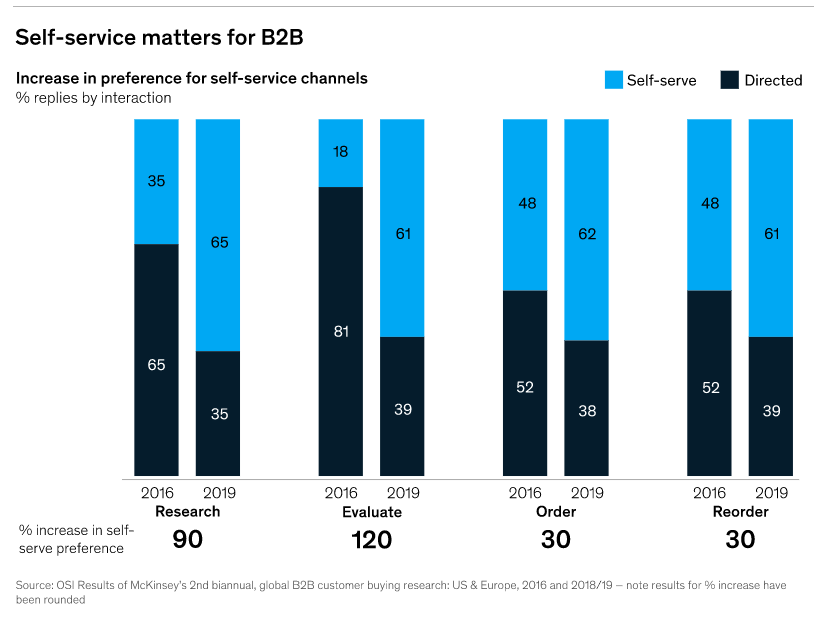
This study shows that the digital space is increasingly facilitating B2B sales. Sales need to have a digital-first approach to selling. Because most sales teams have had to switch to remote selling, this brings up the question of what a digital-first sales process should look like from the customer's perspective.
Studies on customer frustration with the online sales process have highlighted 3 key themes:
-
Length of the ordering process (if done via online channels)
-
The inability to find product or service information
-
Technical issues when ordering
These issues bring up the concept of “frictionless sales” and how creating a great user experience (UX) is key. Frictionless sales isn’t just tied to a customer being able to have a Zoom/Skype call with sales, it encompasses all touchpoints the customer uses or comes into contact with during the sales process: from research to paying for a product or service.
Related: See our latest blog on how do chatbots benefit the user experience
An interesting observation on my part is that COVID-19 has put a spotlight on these underlying, preexisting UX issues like never before.
However, just because the sales process is taking up a greater percentage of time online rather than face to face (or through a video call), it doesn’t mean customers are looking for a less professional experience.
If anything, customers are looking for a more professional experience facilitated through online interactions on websites, social media, live chat, social media and video calling/conferencing — all of which need to provide a single view of the customer in a sales CRM, often through software integration with the CRM, etc.
Treating Your Website Like A Salesperson
You wouldn’t hire a salesperson who can’t easily communicate what your business does, doesn’t know how to help a customer when they are having trouble using your product/service or is just painful to place an order with. So why would you want your website to have those negative characteristics — especially during COVID?
In a digital-first sales process, the website is seen as the fulcrum from which all sales processes start and end. It is essentially another sales team member working 24/7 handing off leads to the relevant team members. (Your website also doesn’t go on holiday or get sick.)
This brings up a question in my mind: are businesses truly investing in their websites as a B2B digital-first sales processes enabler, or are they still just viewed as virtual brochures?
Realistically, designing and building a website to enable B2B sales requires a much greater investment in terms of time and thinking than a website that’s merely an online brochure.
Online Brochure Website Characteristics:
- UX, navigation and layout have not been considered strategically
- Only focused on new potential customers
- Product/service information only
- Only decision-stage oriented
- The only option for conversion is “contact us” or “get a quote”
- Not built for an existing customer to communicate/get information
- Lightly integrated with a sales CRM to only capture leads
B2B Digital-first Sales Website Characteristics:
- UX, navigation and layout have been considered strategically to make the experience as simple for the user as possible
- The website assists both existing and new customers
- Product/service information is available, but also who uses them and why they work for different verticals
- Content is personalised for personas
- The website facilitates B2B lead generation at the research phase of a buyer journey with useful content
- Communication channels include chat
- Has an extensive knowledge base of FAQs
- Deeply integrated into the sales CRM, allowing for contextual content and communication
- Someone would come back to the website even if they don’t need to make a purchase because the content is valuable to them
Which one of the above do you think would create a more frictionless sales process?
Related: See our latest blog on designing your website in HubSpot
Death Of A Salesperson -
Or Is It?
To finish off, I want to end on a high note. As much as the B2B sales process is changing and becoming more digitally focused, this actually presents a great opportunity for sales teams moving forward.
With the whole sales process becoming digital-first, this now gives teams a key opportunity to hire the best talent regardless of where they are — be it in a different city or even country. Huble is a prime example of the latter, with staff in South Africa, the UK, Germany, the USA and Singapore all collaborating with experts in different regions, not limited by local talent pools.
The only caveat to this silver lining is that ongoing success depends on the whole team using a sales CRM to tie the digital sales process together.
Related: Hubspot Sales CRM
A further advantage of the new remote working digital transformation is that businesses can now expand in new territories without needing to open up new (and expensive) offices. All that is needed is an employee and a laptop in-country or even just in the same time zone. Some examples include:
- Working Solutions: Dallas, Texas
- EF Education First: Cambridge, Massachusetts
- Transcom: Stockholm, Uppland, Sweden
Reference: cnbcafrica.com
There might even be a further upside to remote sales teams in terms of productivity. A 2015 case study by Nicholas Bloom, Professor of Economics at Stanford University, and others found that when one Chinese travel agency assigned a random group of employees to work remotely for 9 months, their productivity went up by 13%, generating an increase of roughly $2,000 in annual profits per employee.
Reference: nytimes.com
Conclusion
In a world where the old ways of doing things have been turned upside down, sales teams need a clear view of what their customers want and what steps their company can take to address these needs in a new sales environment.
Face-to-face interaction for the foreseeable future is dead. In its place, video calling, live chat, bots and even old emailing have taken hold as primary methods of communication in the B2B sales process.
Whether it’s digital lead generation, streaming connections, website design, online information or the growth of B2B e-commerce, the COVID-19 pandemic is accelerating the evolution of B2B sales at an unprecedented rate — and beyond anything we could have predicted less than a year ago.
.png)






